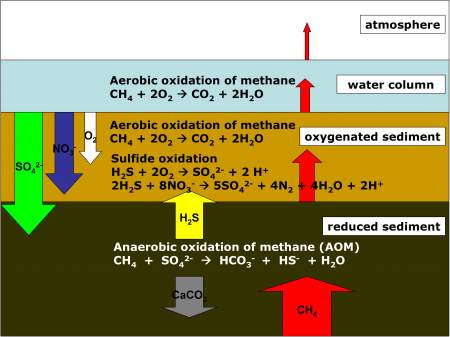 Web Content Anzeige Web Content Anzeige
Major research objectivesThe central objectives of our investigations are to decipher the control parameters of forearc fluid discharge in different subduction zone settings, i.e. to determine the fluxes of volatiles from the seafloor and the microbial turnover of reduced compounds (e.g. methane and sulphide) at the sediment-water interface, to improve global estimates on benthic methane fluxes. In the third phase of the SFB, existing data sets from the extensive fieldwork of phase 2 will be compiled and compared with data from other active margin settings (e.g. Hydrate Ridge, Hikurangi Margin, Aleutean Trench and the mud volcanoes in the Gulf of Cadiz) to better constrain the volatile emission from the sea floor on a global scale. In addition, we plan to support these synthesis efforts by final field work offshore Costa Rica and new field studies offshore Chile. Pending on available ship time with RV Meteor in 2009, we will combine our proven techniques with microbial investigations in the sediments and in the water column.
Fig. B3-1: Scheme illustrating the transfer of inorganic substrates, which fuel the benthic methane filter. Methane advecting with fluids from below becomes gradually consumed by microbial processes in the sediment and in the water column until it is finally emitted into the atmosphere. AOM is the most significant process in this consumption chain. During AOM, methane is transferred to bicarbonate, which may precipitate as authigenic carbonates. Sulphate diffusing into the sediment is reduced to sulphide. Chemoautotrophic communities gain energy by oxidizing the sulphide with nitrate or oxygen. Oxygen is further used by aerobic methanotrophs at the sediment-water interface and in the water column. Major questions addressed in this project are:
|
 Events Events
Kieler Wissenschaftler fühlen den 'Puls der Erde' Wie funktioniert die Recyclingmaschine der Erde?Nach elf Jahren endet der Kieler Sonderforschungsbereich 574 zu Subduktionszonen Final colloquium of SFB 574 Teilprojekt ÖffentlichkeitsarbeitMEERESFORSCHUNG FÜR MICH UND DICH |
|
©SFB574 // Wischhofstrasse 1-3 // D-24148 Kiel // T. +49 (0)431 600 1413 // elange [AT] geomar.de






